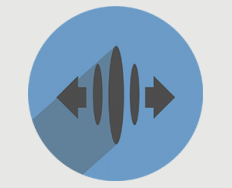10 Brain Exercises for Seniors: Exercise #4 Visual Sweeps

If someone said you could do advanced physics naturally, would you believe them? Now, if someone tossed a ball to you, do you think you could catch it? If you’ve ever caught a ball, it means your brain was able to automatically compensate for distance, speed, parabolic curve and any deviations along the way. All of which are calculated and measured using the mathematical formulas of physics. Yet, our brains and bodies are able to do all of this instinctively. We don’t often think about all the details our brains can process automatically, and it becomes quite amazing when you see professional athletes like baseball or tennis players able to hit a small, fast moving target fairly consistently.
Much like our auditory system, as we age our brain’s ability to process visual information quickly and accurately declines also; but thanks to brain plasticity, these cognitive functions can be improved regardless of age. While we’re unlikely to make the big leagues in our later years, some of us might still enjoy a game of tennis with partners and friends or a game of catch with our grandkids. Being able to follow and anticipate the movement of the ball is vital to enjoying these games. Tracking a small, fast moving object like this is part of our brain’s visual processing system. Because of the plastic nature of our brains, we can train our brain to improve and speed up its visual processing, and be able to better manage more information at quicker speeds. Creating a higher resolution picture in your mind means you can react quicker but also recollect what you’ve seen at a later time with more accuracy - that is, it improves your visual memory, a very useful ability outside of ball games!
When you see different types of movement such as vertical motion and horizontal motion, different neurons are activated to process these visual cues. Visual sweeps has been designed to help you exercise all the different sets of neurons used in visual processing by changing the direction, shifting colours and luminescence, and increasing or decreasing the spatial frequency within the image you see. This variety in what you see challenges all the different parts of your brain used for visual processing and helps your brain become more effective at “seeing.” Using this exercise can let you back out in the yard or on the court with more confidence that you will see what’s coming at you more accurately.
Free Brain Training Exercises
If you are interested in trying this exercise and other BrainHQ exercises for free, visit https://dynamicbrain.brainhq.com and create a free account to exercise a few minutes a day – it’s not enough, but definitely better than no exercise at all.
Don’t forget to bookmark the link!
Related pages:
Description of Visual Sweeps Exercise
https://dynamicbrain.brainhq.com
https://dynamicbrain-fr.brainhq.com
DynamicBrain Inc. is the Canadian Partner of Posit Science Corporation providing brain fitness program, BrainHQ in English and French.






 English
English
 Français
Français


